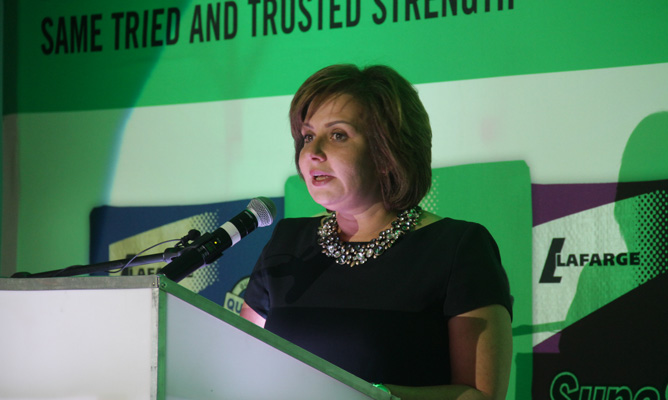
Lafarge Cement Zimbabwe chief executive officer Amal Tantawi, says Aliko Dangote is welcome to invest in the country although local cement producers have capacity to meet the needs of the market.
BY TATIRA ZWINOIRA
The three cement producers operating locally are PPC, Lafarge and Sino Zim cement.
Last year, Africa’s richest man visited the country and announced plans to set up projects in cement manufacturing, power generation and coal mining with a combined worth of over $1 billion.
Speaking to NewsDay after Lafarge’s annual general meeting yesterday, Tantawi said the entrance of the Dangote Group was good for the market and consumers.
“Dangote is mostly welcome to come we work with competition, which is good for the market and the consumer. The problem is he does not want to put the investment in Zimbabwe, he wants to bring his cement from Zambia because he cannot sell and saturate in Zambia,” she said, adding that the three cement producers had enough to supply the market.
Tantawi wondered why any new player would invest $300 million “in a new plant when you [local producers] have an excess capacity of almost double”.
- Chamisa under fire over US$120K donation
- Mavhunga puts DeMbare into Chibuku quarterfinals
- Pension funds bet on Cabora Bassa oilfields
- Councils defy govt fire tender directive
Keep Reading
“So when you do your calculations and analysis, the Dangote group just want to bring in their cement because they have excess capacity and it is lucrative for them to take dollars.” she said.
The Lafarge chief executive officer told the company’s shareholders that the cement producer was under serious threat from imported cement.
“There are huge margins coming in from imports. Volumes have not slighted down as we have not seen a decrease in the cement market. We are still witnessing the regional threats as there is eight million tonnes in excess capacity whereas three million is feasible to come into Zimbabwe. After the three producers approached the Ministry of Industry and Commerce, they are now only allowing regulated imports, before that we found that anyone could go to the ministry and get a permit with many being forged,” Tantawi said.
“We are in continuous discussions with them (government), we provide them statistics and data. They (Ministry of Industry and Commerce) are really receptive and very understanding. We even addressed some of the concerns of the importers who say because they are in remote areas it is easier for them to cross border and get the cement. We agreed as a cement industry that we will put depots in these remote areas but we will never be able to compete with price of cement in Mozambique or Zambia.”
In a recent paper the localcement producers said they have a capacity of 1,85 million tonnes annually. The trio said cement demand for 2016 was estimated at 1,17 million tonnes.
Lafarge said yesterday that high production costs and logistical concerns were making it difficult for the cement industry to compete with imports.
The high cost include high electricity tariffs, fuel and labour costs which were higher than those in regional countries.
Tantawi said Lafarge was aiming to reduce cost of production by 20% to 25% by the end of this year.
Meanwhile Kumbirai Katsande is now the new board chairman of Lafarge taking over from Muchadeyi Masunda who was holding forte in an acting capacity.












